Annapolis Royal is located in the western part of Annapolis County. Known as Port-Royal to France until being renamed in 1710 by Britain, the town is located in an area that claims to have the second oldest continuous European settlement in North America. The community is situated at the western end of the fertile Annapolis Valley, nestled between the North and South mountains which define the valley. The Bay of Fundy is just over the North Mountain, 10 kilometers out of town, and the Annapolis Basin forms the waterfront for this historic town. Directly opposite Annapolis Royal on the northern bank of the river is the community of Granville Ferry.
Buffleheads break through the still waters of the Annapolis River.

Golden Morning Light in the Annapolis Basin

The town of Granville Ferry sits nestled in the hills across from Annapolis Royal.

Nova Scotia Scenic Moment
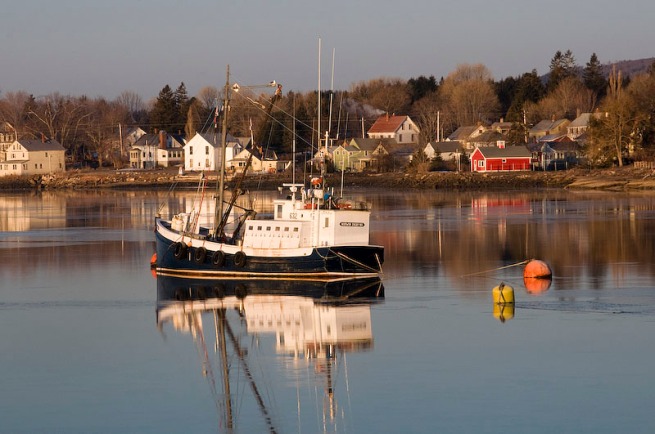
The Ryan Royale

The crew of the Ryan Royale fixes their gear and gets ready to head out for some more scallops.
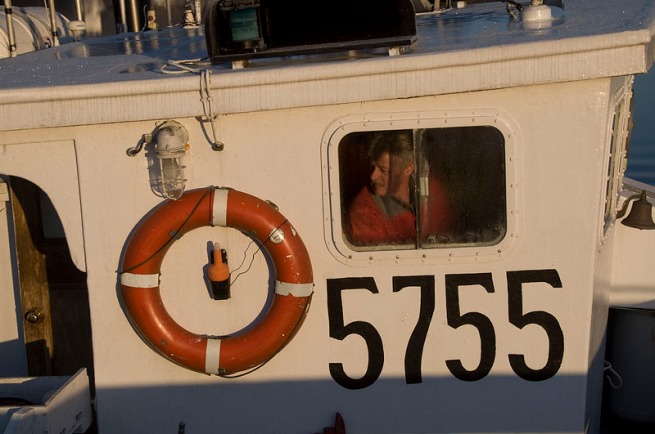
Lighthouse in Annapolis Royal
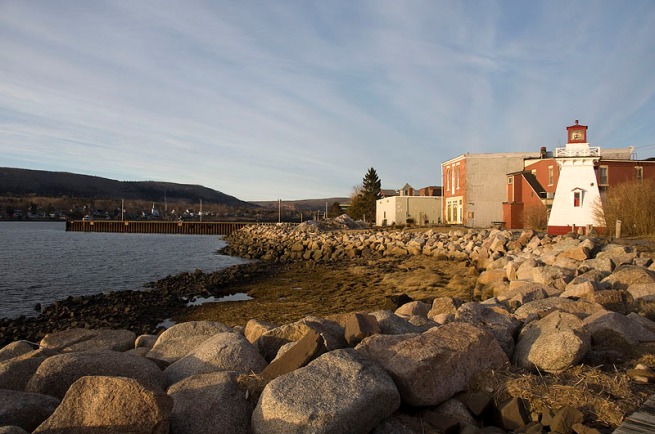
A local enjoys a stroll by the water on the wooden walkway in Annapolis Royal.
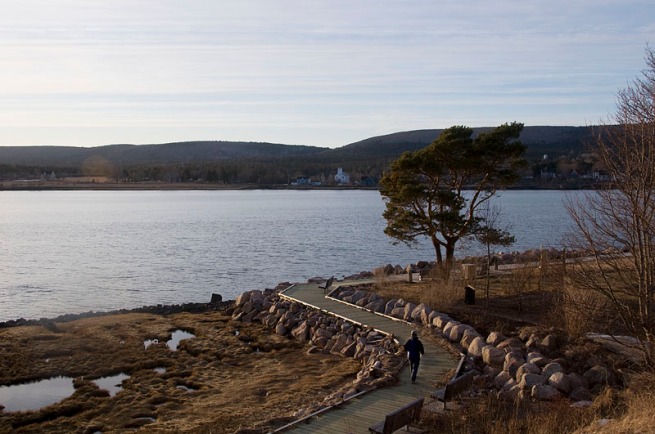
Downtown Annapolis Royal is home to many small businesses and brightly-colored historical buildings.
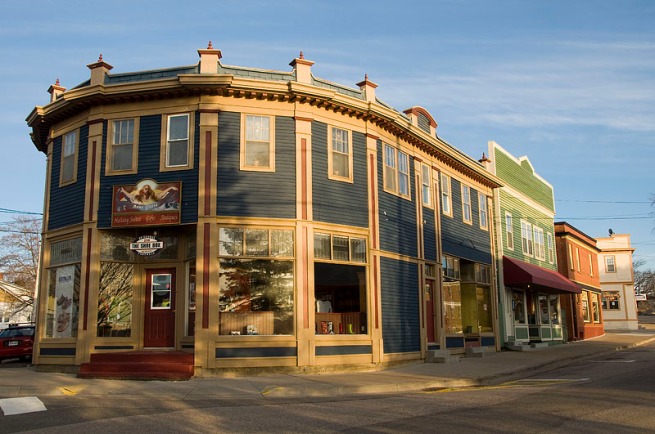
Fort Anne National Historic Site of Canada is Canada’s oldest. It is a present-day reminder of a time when conflict between Europe’s empire builders was acted out on the shores of the Annapolis River. It offers a sweeping view of the beautiful Annapolis Basin from the centre of Annapolis Royal.
The Fort Anne Museum exhibits highlight the history of the fort.
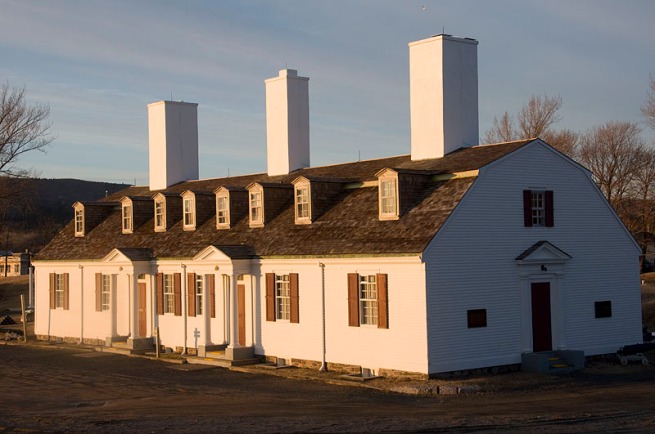
Fort Anne
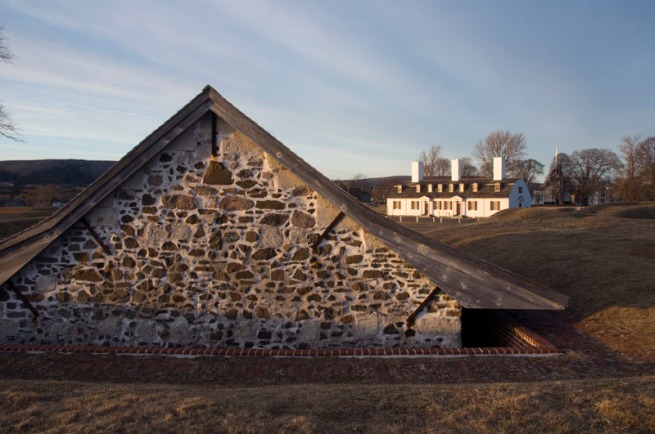
As the focal point for French and British settlement and as the seat of government of Acadia and then Nova Scotia, Fort Anne National Historic Site played an important role in Canadian history. The site was the scene of numerous battles as France and England fought for control of North America in the 17th and 18th centuries. Both imperial powers considered the conquest of this fortified site as the key to domination of the part of eastern Canada known by the French as “Acadie” and by the British as “Nova Scotia.” The site has been fortified since 1629 when the Scots who came to colonize “Nova Scotia” (New Scotland) built Charles Fort. After the colony reverted to France in the 1630s, French colonists replaced the Scots. Their leader, Charles de Menou d’Aulnay, built the first of four French forts, possibly incorporating parts of the Scots’ fort. Two make-shift forts succeeded d’Aulnay‘s fort. Then, in 1702, the French began construction of the Vauban earthwork that still stands to-day.
These hills are an example of Vauban fortifications.

Historic Fortification in Saint Anne
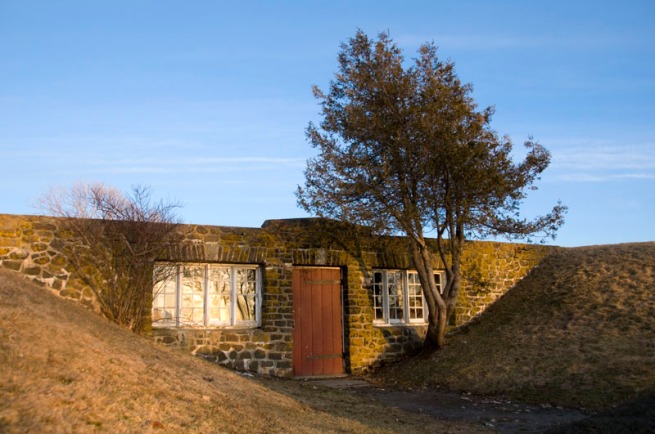
Once a sight of conflict, strife and war, children now run free on the battlefields.

Dean and Tyler play frisbee on a brisk day in Annapolis Royal.

Mirror Moment
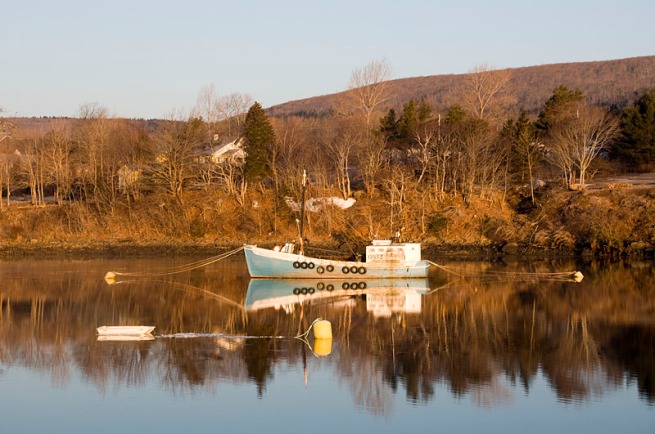
These gentlemen acquired some vintage horse tackle to use as decorations from the auction in Lawrencetown.

Dale and Ervin

Kathy runs the A.J. Meats and Grocery store in Lawrencetown. Not only does she sell delicious homemade pork sausages, but she also makes a mean banana bread.

This mural in Windsor sums up the flavor of the area. In 1878, Windsor was officially incorporated as a town. Its harbour made the town a centre for shipping and shipbuilding during the age of sail. As the port of registry for the massive wooden shipbuilding industry of the Minas Basin, Windsor was the homeport of one of the largest fleet of sailing ships in Canada.

Built in June 1750 by Major Charles Lawrence, Fort Edward protected the route from the new capital, Halifax, to the Annapolis Valley. It was garrisoned by the British army until the 1820s. The blockhouse at Fort Edward is the oldest blockhouse in Canada, and one of the oldest buildings in Nova Scotia. It is a National Historic site of Canada.
Fort Edward

Those 2 guys are a couple of “hames” lol I crack myself up. XD
That second picture of the boat cutting through the water is spectacular. Every thing here is still covered in dirty snow…less than inspiring for photos. lol
This was our weather today…this is Tim’s folks garage roof. Snow, snow, snow…but not as much as they gotten in Quebec. =D

Oops, wrong link Xd

These photos are amazing! Great work.
thank you for the view of annapolis royal’s fort ann, I grew up playing in that site as my grandmother lived on drury drive or lane I am not sure it was in front of the train station and opposite side of the milk factory when I was a kid. I am feeling very sentimental right now and your pictures brought me back to more happier days of my life. my dad was Wilfred Morgan son of Bessie and Edward Morgan in case you happen to know the family.